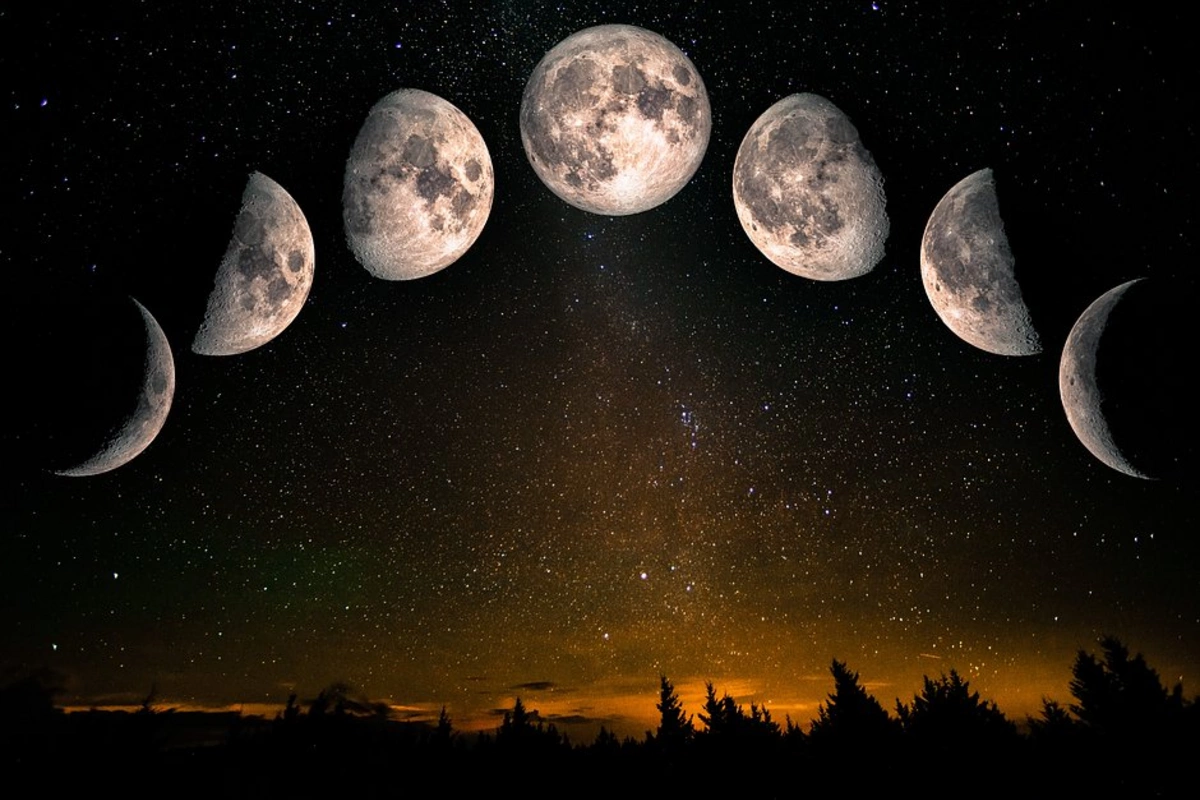Year of Great Eclipses: What Will Happen in the Sky in 2026## English Translation

In 2026, two solar and two lunar eclipses are expected.
As reported by BAKU.WS with reference to the Department of Astrophysics of the Physics Faculty of Baku State University (BSU), the corresponding information has already been published.
The first solar eclipse will occur on February 17, 2026. It will be a repetition of the annular eclipse observed on February 7, 2008. The next similar phenomenon is expected on February 28, 2044.
The partial phase of the eclipse will last from 13:56:14 to 18:27:30, a total of about 4 hours and 31 minutes. The maximum phase will occur at 16:11:45 and will last 2 minutes and 20 seconds.
The central phase of the eclipse will begin at 15:42:38 and end at 16:41:21. During this period, the Moon will be farther than usual, so its angular diameter will be smaller than the solar one. Because of this, the Moon will not be able to completely cover the Sun, and a bright solar rim will be visible around it - a characteristic sign of an annular eclipse. The average length of the lunar shadow is 373,320 km, but on February 17, the distance from the Moon to the Earth will reach 387,663 km. Therefore, the shadow will not reach the Earth's surface: the Moon will cover only 0.963 parts of the solar disk, leaving a thin shining ring visible. With this type of eclipse, it is impossible to see the solar corona and stars close to the Sun.
The annular phase will be observed in Antarctica and the southern part of the Indian Ocean. The partial eclipse can be seen in almost all of Antarctica (except for the coastal zone facing New Zealand), in the south of Chile and Argentina, in South Africa, Madagascar, in the central and southern regions of Botswana (except for the western and northwestern areas), in Zimbabwe, Malawi, Mozambique, in the south of Tanzania, as well as over the southern part of the Atlantic and the southwestern and southern parts of the Indian Ocean. This phenomenon will not be visible in Azerbaijan.
The second solar eclipse of the year will occur on August 12 and will be total. It will repeat the total eclipse of August 1, 2008, and the next similar event is expected on August 23, 2044.
The partial phase will begin at 19:34:01 and end at 23:57:48, the duration will be about 4 hours and 24 minutes. The maximum eclipse will occur at 21:46:06. The central phase will last from 20:57:54 to 22:30:01. At this moment, the Moon's shadow will completely cross the Earth's surface, as the Moon will be closer to Earth and completely cover the solar disk. On August 12, the distance between the Moon and the Earth will be 359,445 km, which will ensure that the visible size of the Moon is 1.0386 times larger than the solar disk. The total eclipse can be observed in Greenland, Iceland, Portugal, Spain, and in Krasnoyarsk (Russia). Its maximum duration will be 2 minutes and 18 seconds. It will not be visible in Azerbaijan.
The first lunar eclipse of 2026 will occur on March 3 and will be total. The Earth's shadow will completely cover the Moon, causing it to acquire a reddish tint - the "blood Moon" effect. This happens because the Earth's atmosphere scatters sunlight, allowing predominantly red and orange rays to reach the Moon. The Earth's shadow includes the penumbra and umbra: first, the Moon enters the penumbra (which is almost imperceptible), then the umbra, which is visible to the naked eye.
The penumbral eclipse will begin at 12:44:25, the partial eclipse at 13:50:00, and the total eclipse at 15:04:26. The duration of the total phase will be about 58 minutes. The maximum will occur at 15:33:46. The total phase will end at 16:02:45, the partial phase at 17:17:10, and the penumbral phase at 18:22:59.
This eclipse will be visible in Asia, Australia, and North America. For Azerbaijan, it is not accessible, as the Moon will be below the horizon at the time of the eclipse.
The second lunar eclipse of the year will occur on August 28 and will be partial: the Moon will pass only through part of the Earth's shadow, so one part of it will darken, and the other will remain illuminated.
The penumbral phase will begin at 05:23:55, the partial phase at 06:33:48. The maximum eclipse is expected at 08:12:53. The partial eclipse will end at 09:51:55, and the penumbral eclipse at 11:01:41.
Residents of Europe, Africa, Asia, and America will be able to observe this phenomenon. In Azerbaijan, only the beginning of the penumbral phase will be visible - from 05:23 to 05:55, until the Moon sets.
Similar News
Iconic American actor became homeless
American actor and two-time Oscar winner Kevin Spacey admitted that he became homeless. As reported by BAKU.WS, he revealed this in an interview with The Telegr...




 Azərbaycanca
Azərbaycanca  По-русски
По-русски  English
English 





